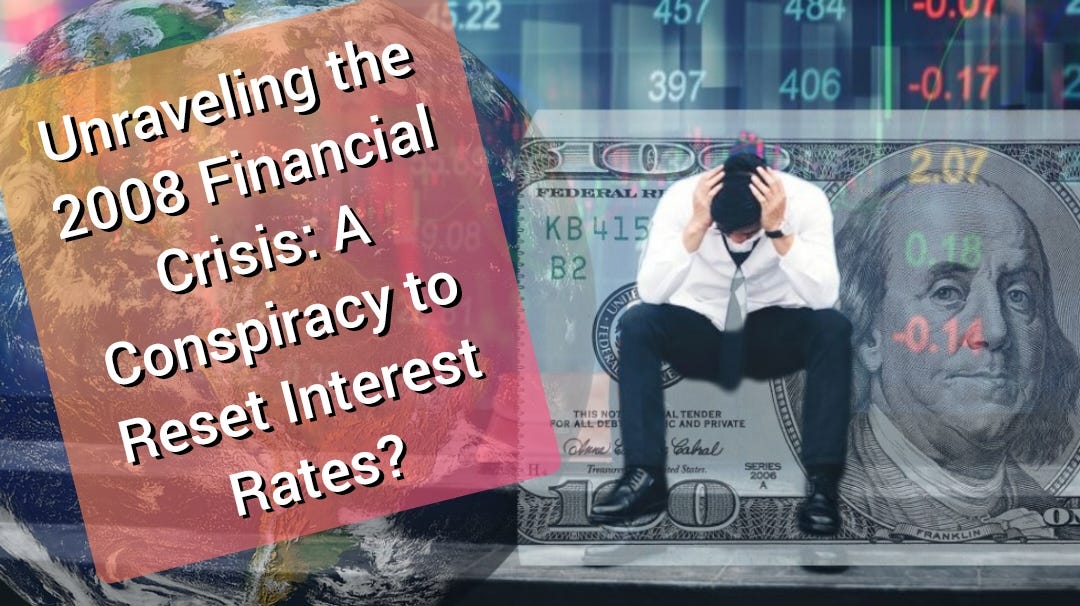In the annals of economic history, the 2008-2009 financial crisis stands out as a seismic event that reshaped the global financial landscape. While widely attributed to a confluence of factors, a speculative perspective raises intriguing questions about whether the crisis was, in part, engineered to create a strategic opportunity for resetting interest rates. Let’s delve into this speculative exploration, examining the intricate details that could support such a theory.
**1. The Housing Bubble Burst: Setting the Stage**
At the heart of the 2008 crisis was the bursting of the housing bubble, leading to a cascade of foreclosures, financial institution collapses, and a severe economic downturn. Critics argue that the overheated housing market was deliberately inflated, setting the stage for a dramatic collapse. This viewpoint suggests that manipulating the housing market could serve as a catalyst for broader economic changes.
**2. Adjustable Rate Mortgages (ARMs) and Unaffordability**
A key element in this speculative narrative is the prevalence of adjustable-rate mortgages (ARMs) during the housing boom. These mortgages, with their initially low-interest rates that later adjusted upward, became unaffordable for many homeowners as rates increased. The resulting wave of foreclosures provided financial institutions with a substantial inventory of repossessed homes.
**3. Resetting Interest Rates: Incentivizing Savers**
One possible motive behind engineering a housing crisis could be to provide an opportunity to reset interest rates at the Federal Reserve. As the crisis unfolded, the Fed implemented unprecedented measures, including slashing interest rates to near-zero levels. This move was ostensibly aimed at stimulating economic recovery. However, a speculative perspective raises the question: Did this crisis offer a strategic opening to reset interest rates, providing an incentive for savers?
